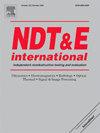A physics-guided memory-enhanced semi-supervised approach for detecting weld defects in radiographic images
IF 4.5
2区 材料科学
Q1 MATERIALS SCIENCE, CHARACTERIZATION & TESTING
引用次数: 0
Abstract
Deep learning-based weld defect detection in industrial X-ray imaging is often constrained by scarce annotated data, high labeling costs, and poor generalization to unseen scenarios. To address these challenges, this paper proposes a physics-guided, memory-enhanced semi-supervised defect detection model (PMSDM). The model constructs normal pattern representations from easily accessible defect-free images via a localization memory module, enhances anomaly learning through artificial defects generated based on X-ray imaging principles to better define classification boundaries, and achieves fine-grained classification using a small number of labeled defect samples through a classification memory module. Localization and segmentation of tiny defects are performed via difference-based comparison with the memory bank, further refined by a spatial attention module that fuses multi-scale feature information. Experiments on the self-built dataset and the publicly available GDXray dataset show that PMSDM consistently outperforms traditional and deep learning baselines in terms of Dice, IoU, Accuracy, and mAP, while maintaining strong generalization under domain shifts. PMSDM offers an efficient and scalable solution for weld defect detection in data-scarce industrial environments.
射线图像中焊缝缺陷检测的物理引导记忆增强半监督方法
在工业x射线成像中,基于深度学习的焊缝缺陷检测通常受到标注数据稀缺、标记成本高以及对未知场景泛化能力差的限制。为了解决这些问题,本文提出了一种物理引导、记忆增强的半监督缺陷检测模型(PMSDM)。该模型通过定位记忆模块从易获取的无缺陷图像构建正常模式表示,通过基于x射线成像原理生成的人工缺陷增强异常学习,更好地定义分类边界,并通过分类记忆模块利用少量标记缺陷样本实现细粒度分类。微小缺陷的定位和分割通过与记忆库的差异比较来实现,并通过融合多尺度特征信息的空间注意模块进一步细化。在自建数据集和公开可用的GDXray数据集上的实验表明,PMSDM在Dice、IoU、Accuracy和mAP方面始终优于传统和深度学习基线,同时在域转移下保持了很强的泛化性。PMSDM为数据匮乏的工业环境中的焊缝缺陷检测提供了一种高效且可扩展的解决方案。
本文章由计算机程序翻译,如有差异,请以英文原文为准。
求助全文
约1分钟内获得全文
求助全文
来源期刊

Ndt & E International
工程技术-材料科学:表征与测试
CiteScore
7.20
自引率
9.50%
发文量
121
审稿时长
55 days
期刊介绍:
NDT&E international publishes peer-reviewed results of original research and development in all categories of the fields of nondestructive testing and evaluation including ultrasonics, electromagnetics, radiography, optical and thermal methods. In addition to traditional NDE topics, the emerging technology area of inspection of civil structures and materials is also emphasized. The journal publishes original papers on research and development of new inspection techniques and methods, as well as on novel and innovative applications of established methods. Papers on NDE sensors and their applications both for inspection and process control, as well as papers describing novel NDE systems for structural health monitoring and their performance in industrial settings are also considered. Other regular features include international news, new equipment and a calendar of forthcoming worldwide meetings. This journal is listed in Current Contents.
 求助内容:
求助内容: 应助结果提醒方式:
应助结果提醒方式:


